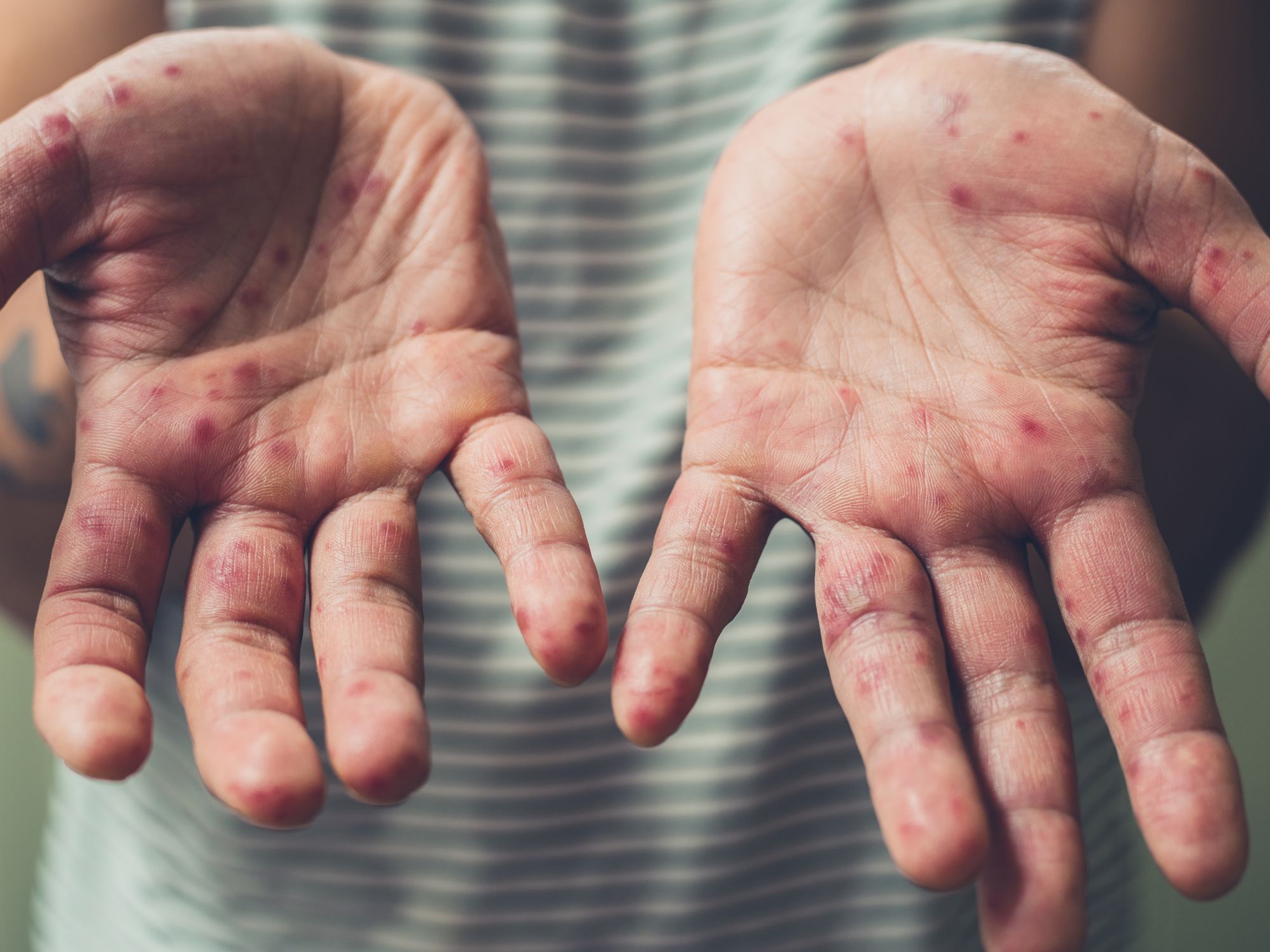Measles

- Measles is a highly contagious illness that usually includes symptoms such as a high fever, runny nose, cough, and a rash.
- The MMR (measles, mumps, rubella) vaccine protects against the spread of measles.
Measles is a highly contagious illness that primarily spreads via:
- Droplets or airborne particles from the noses, mouths, or throats of infected people.
- Contact with an infected person’s respiratory droplets or saliva.
- Contact with surfaces contaminated with respiratory secretions or saliva.
Despite a great reduction in the number of cases and near eradication of the disease in the United States at the start of the 21st century, measles continues to occur domestically. Measles is usually a childhood disease but can affect individuals of any age. Outbreaks are most common in the winter and spring.
The first sign of measles is usually a high fever, which begins about 10-12 days after exposure to the virus and lasts four to seven days. A runny nose, cough, red and watery eyes, and white spots inside the cheeks can develop in the initial stage. After several days, a rash erupts, usually beginning on the face and upper neck. Over about three days, the rash spreads, eventually reaching the hands and feet. The rash lasts for five to six days. On average, the rash occurs 14 days after exposure to the virus (within a range of 7-21 days).
Infected people, including children and adults, can spread the measles virus for several days before they develop a rash. People are most infectious while they have symptoms such as fever and cough, and most people remain infectious for several days once the rash appears. However, some immunocompromised people (i.e., those with weakened immune systems) may be able to spread the virus until they fully recover. People who develop measles-like symptoms after vaccination are not typically able to spread measles to others.
Workers may be exposed to measles whenever the virus is circulating in the community. Some workers also may be exposed to infected individuals who arrive in the U.S. from abroad. Workers who perform services or other activities in homes in affected communities also may be exposed. Workers who have not received the measles vaccine or who have not had the disease can get measles if they are exposed.
The measles, mumps, and rubella (MMR) vaccine can prevent measles. For the vast majority of recipients, the vaccine is safe and effective. As with almost any vaccine, however, a small number of recipients may experience allergic reactions, side effects, or other adverse events. The benefits of vaccination typically far outweigh these risks.
Address developing infection control plans and other infection prevention measures for workers in general and for those who may be at higher risk, including:
- Healthcare and dental workers.
- Childcare and school workers.
- Laboratory workers.
- Environmental services workers.
- Workers who are pregnant.
- Workers who travel abroad.
